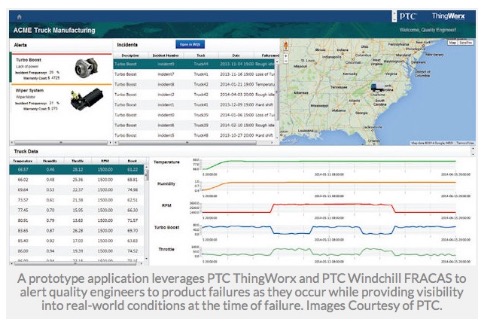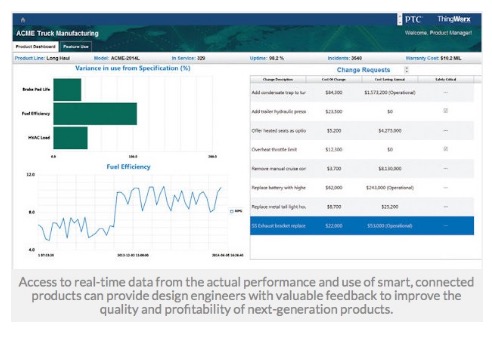2.5.5 : Product requirements
written by Oleg Shilovitsky
There is no product without requirements. One of the most overlooked elements of product lifecycle management is the ability to manage requirements. Traditionally, requirements are represented as a bunch of file – Word or Excel spreadsheet even for some relatively complex products.
If you think about requirements in a structured way, you can model it as a list of functions with dependencies. It will give you an ability to trace functional and other product requirements to specific elements of product design and physical characteristics – bill of materials, manufacturing specifications and more.
The biggest value of structured requirement management is to validate product design and engineering against customer and industry needs.
Requirement management is traditionally underserved by PLM vendors. Most of PLM implementations are initially skipping this function and focusing on design and engineering data management. Adding requirement management into product lifecycle loop can increase product quality and traceability towards results.
I can identify 3 trends in the way requirement management is coming to product lifecycle management:
– Structured requirement management
– Capturing requirements from customers via multiple social channels (including social media and networks)
– Bringing IoT and big data analytics into product requirement management
IBM + Twitter: Social PLM requirement management
To attach “social” to PLM is not a simple task. Part of the problem – clear value proposition. To find a single social function is a key thing that can help PLM vendor to provide. Do you think requirement management can be one? Traditional requirement management is set of excel spreadsheets and word documents. More sophisticated companies can use requirement management tools integrated with PLM software. How to link requirement management and social networks
Fortune article – Why IBM and Twitter did a data analytics deal speaks about potential that hidden in social data. Pay attention to the following passage:
Twitter is ultimately the most important archive of human thought that has ever existed. It really does represent the voice of the planet. The question I would pose to business leaders is, if you were thinking of a particular business decision, would you want the world to weigh in? An example on a more macro scale would be: You manufacture computers. Your big challenge is figuring out what to make and how much to make of it. For the former, you can figure out what people are talking about that they most value and what the weaknesses are in a competing product. You can also talk about what you’re building and get a reaction from consumers.
It sounds like IBM analytic tools applied to an archive of human thoughts can produce an interesting result for any manufacturer. It made me think about potential to use it for social requirement management. The usage can be from finding innovative idea to better prioritization of features.
Social technologies are looking for clear value proposition in product lifecycle management. I found the idea of social data analytics combined with structured requirement management functions interesting. To prioritize requirements, crowdsource ideas or provide a feedback to product management about future product feature from online source of social information can be pretty neat feature with an interesting ROI.
IoT closes design loop, but can overwhelm engineers by data
There is no shortage of talks about IoT these days. CAD and PLM vendors included. While each company is developing their own approach with regards to PLM and IoT, the overall trend shows growing interest from PLM vendors to see what benefits IoT can bring to their businesses.
Few months ago, I posted about 3 things PLM can do with IoT tomorrow. One of things that PLM can do with IoT is to improve requirement management function. More specifically, I guessed that IoT can become an intelligent approach to validate design hypothesis and get a better perspective on customer needs. Next-generation products outfitted with embedded sensors, actuators and other technologies will be able to detect things about their environment — temperature changes, for example, or an imminent part failure — and communicate that information in real time over the standard Internet Protocol to a database accessible by engineers. From there, engineers could analyze this trove of product-related data as part of their regular workflow to guide future product designs, address persistent quality issues, and inject more realism into verification and testing procedures.
Below few examples of prototype application made by PTC based on ThingWorx and Windchill alerting engineers about product failures and providing product performance data.


These examples made me think about challenges related to growing data complexity of engineering solutions. CAD and PLM applications are not the example of simplest application. The demand for better user experience and simplicity is everywhere these days. IoT brings benefits of additional information, but increases a complexity of data and can be potentially overwhelming for engineers.
We are overloaded with information these days. Products are getting more complex by adding electronic and software components. Our social interaction online brings even more information to product development, engineering and manufacturing. IoT creates a next wave of data, which in my view will become even bigger than everything we’ve seen until now. The future architectures of CAD and PLM solutions will have to count scale and complexity of future data. This is a note for PLM architects and IT managers.
In existing PLM environments, product requirements data is often missed or forgotten. It usually lives inside of documents, spreadsheets and other piles of unstructured data. The first step in rationalization of product requirements data is to capture it and move it from unstructured content to environment that can be connected to product design and performance. Data management, search and indexing are technologies to help. The next step will be to connect requirements to actual product performance – modern IoT trends can make it happen.
I have checked your blog and i have found some duplicate content,
that’s why you don’t rank high in google, but there is a tool that can help you to create 100% unique articles, search for: boorfe’s
tips unlimited content
I see you don’t monetize your website, don’t waste your
traffic, you can earn extra cash every month. You can use the best adsense alternative
for any type of website (they approve all websites), for more details simply search in gooogle:
boorfe’s tips monetize your website